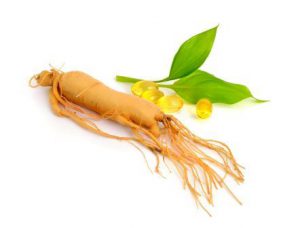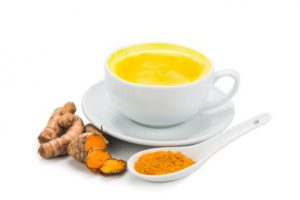by Jen Johnston, CHHC, senior marketing services account manager, for the Step into Natural blog series
If your pharmacy is currently or planning on diving deeper into natural products, it is important to be aware of the current ingredient and product trends to maximize potential sales. This month I will introduce you to adaptogenic herbs, commonly known simply as “adaptogens,” and also a kitchen spice-turned-superfood called turmeric.
Adaptogens
Adaptogenic herbal ingredients have been gaining steam within supplements, teas, and drinks. Merriam-Webster defines an adaptogen as “a nontoxic substance and  especially a plant extract that is held to increase the body's ability to resist the damaging effects of stress and promote or restore normal physiological functioning.”
especially a plant extract that is held to increase the body's ability to resist the damaging effects of stress and promote or restore normal physiological functioning.”
According to Nutraingredients-USA, there are nine adaptogens, some which may already be on your shelves and others which may be new to you:
- Asian Ginseng (Panax ginseng)
- American Ginseng (Panax quinquefolis)
- Ashwaganda (Withania somnifera)
- Eleuthero (Eleutherococcus)
- Schisandra (Schisandra chinensis)
- Rhodiola (Rhodiola rosea)
- Shilajit (Asphaltum bitumen)
- Rhaponticum (Rhaponticum carthamoides)
- Cordyceps (Cordyceps sinesis)
Adaptogens may be packaged alone in a variety of forms or may be one of many ingredients within a product.
Consumers are hearing about adaptogens on popular blogs that promote functional medicine concepts, such as draxe.com, back-to-the-land publications like Mother Earth News, and more mainstream media outlets, such as Dr. Oz. However, there is consumer confusion over adaptogens with one popular women’s magazine, Shape, promoting their benefits while another popular publication, Self, pointing out the lack of scientific evidence.
Bottom line, whether they work or not, shoppers are seeking them out, so it is worth considering if you want to carry them. If you do, reading up on them is a good idea so that you know how to advise patients. For example, some of these herbal preparations may not be appropriate for pregnant or breastfeeding mothers.
If you choose not to carry adaptogens, your customers may pick them up somewhere else, and if they are on prescription medications, they may look to you to explain any potential interactions between their prescription drug(s) and an adaptogenic herb.
Turmeric
Good Housekeeping magazine called turmeric “the new avocado,” so you know it must be trendy. Turmeric is best known as the bright yellow spice used in Indian food. Curcumin is the compound responsible for its color. Both of these have hit their stride in 2018 as ingredients within food, drink, and supplement products that can  purportedly address silent inflammation. Turmeric has even shown up in a number of skin care products.
purportedly address silent inflammation. Turmeric has even shown up in a number of skin care products.
People mix turmeric into smoothies, lattes, and teas. They make “golden milk.” They take it as pills and add it to food. It comes in the fermented beverage kombucha. Alternative health bloggers such as Wellness Mama are promoting the benefits as much as non-profit organizations such as the Arthritis Foundation.
Some people predict turmeric and curcumin will turn out to be only a fad, however, if your customers are asking for a natural “anti-inflammatory,” turmeric or curcumin powder or supplements might be just the thing that satisfies their desire. Then again, they will also need to understand how turmeric or curcumin could interact with their medications, so your knowledge of the subject is key.

